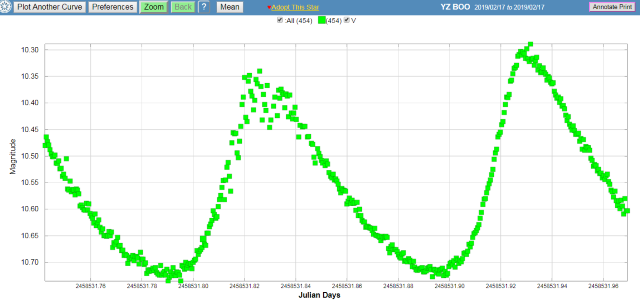These types of star have have distinctly sawtooth pulsations with the rise time shorter than the fall. eg YZ Boo has a catalogued rise time of 31% which seems to tally with the actual light curve
EDIT:from the catalogue field descriptions
Rise_Eclipse_Time
This parameter contains either the rise time (M-m) for intrinsic variables, or the duration of the eclipse (D) for eclipsing binaries, both given as a percentage of the period value for the star. These values help to define the shape of the light curve.
Cheers
Robin
